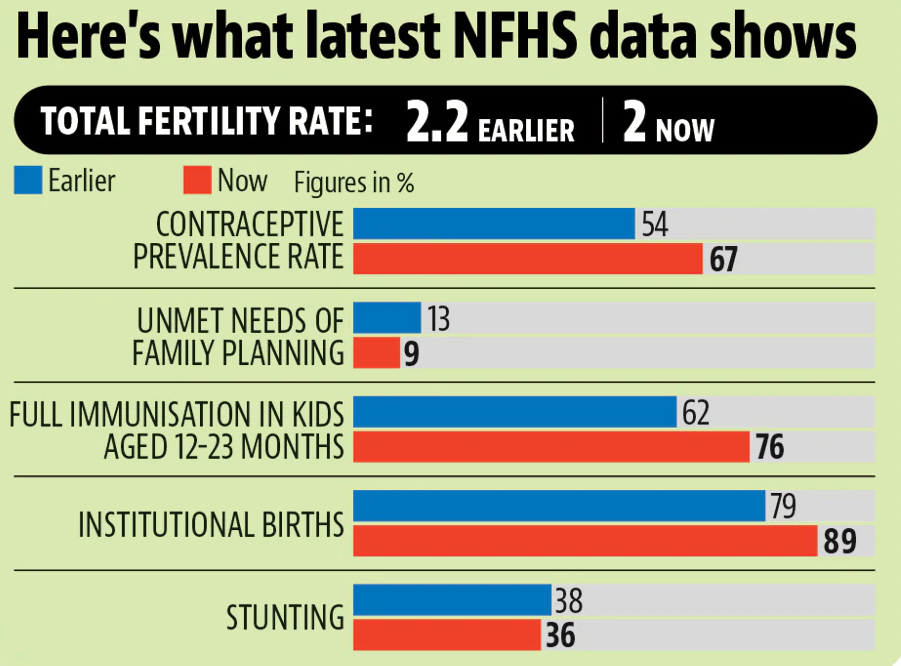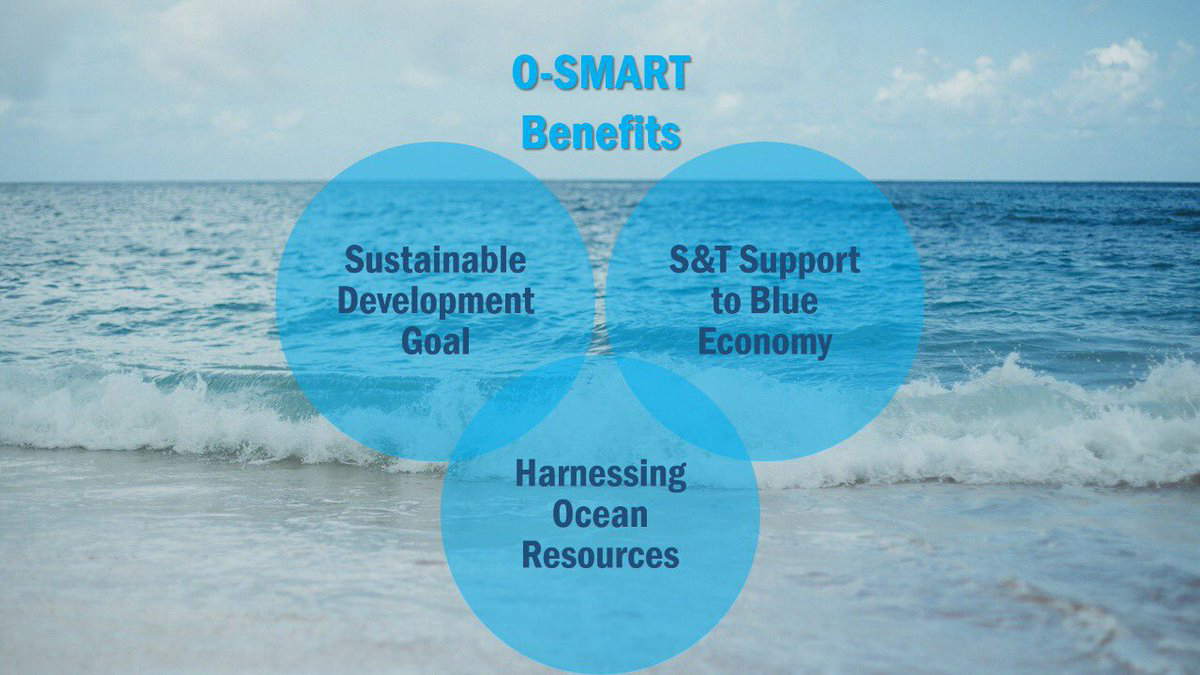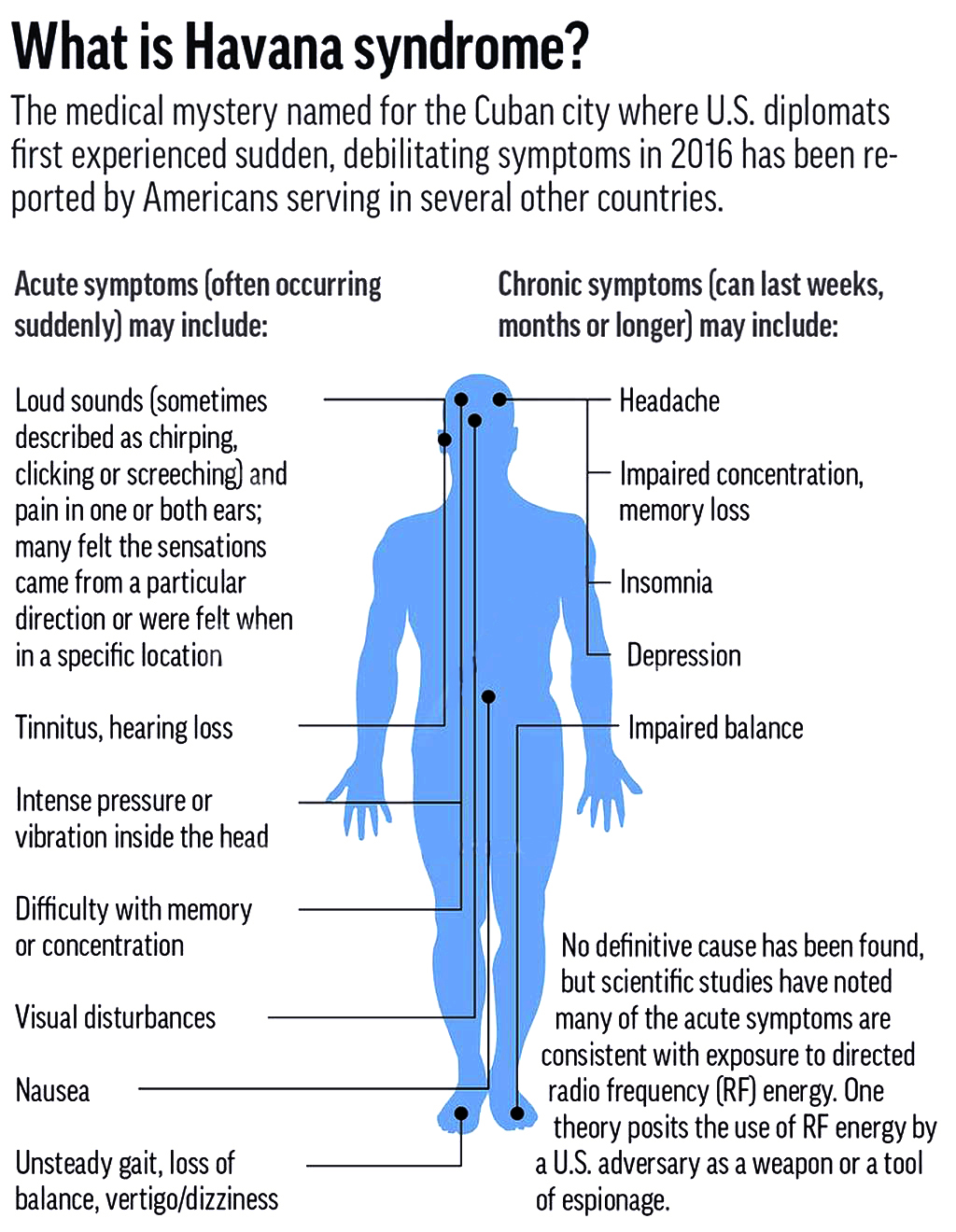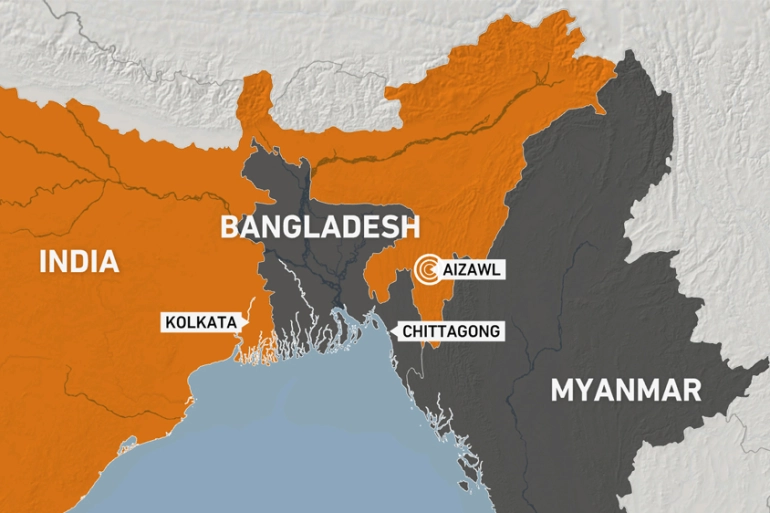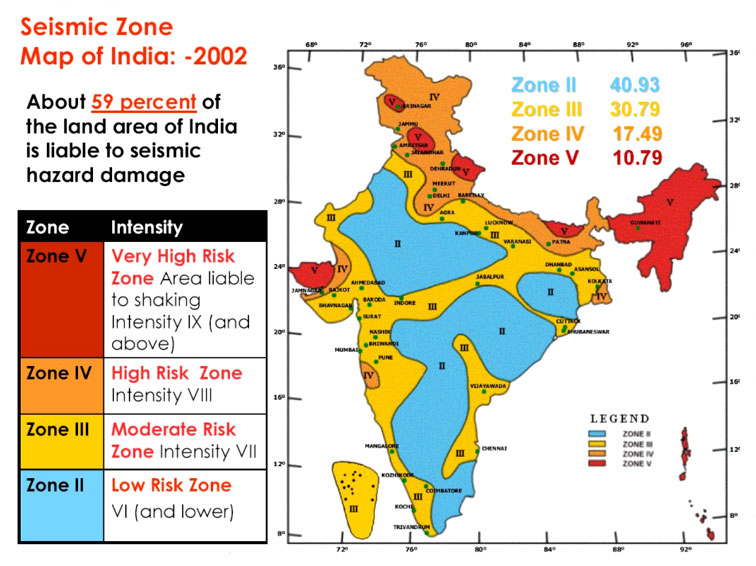India First Responder In Indian Ocean Region
Why in News
Recently, the Defence Minister of India addressed the 5th World Congress on Disaster Management (WCDM) held in New Delhi.
- At the congress the Defence Minister asserted that, time and again India has proved itself to be “first responder” in the Indian Ocean Region (IOR).
- The emerging concept of India as a “first responder” reflects the country’s growing capability and increasing willingness to assume the role of a leading power.
World Congress on Disaster Management
- It is a unique initiative of Disaster management initiatives and convergence society to bring researchers, policy makers and practitioners from around the world in the same platform to discuss various challenging issues of disaster risk management.
- Its mission is to promote interaction of science, policy and practices to enhance understanding of risks and advance actions for reducing risks and building resilience to disasters.
Key Points
- India - The First Responder:
- Underlying Vision: India’s vision for the Indian Ocean encapsulated by the concept of SAGAR (Security and Growth for All in the Region). SAGAR has both distinct and inter-related elements such as:
- Deepening economic and security cooperation among the littoral states.
- Enhancing capacities to safeguard land and maritime territories.
- Working towards sustainable regional development.
- Blue Economy and promoting collective action to deal with non-traditional threats like natural disasters, piracy and terrorism.
- Enabling Factors: India’s unique position in the Indian Ocean Region, complemented by a capability of the Armed Forces, enables it to contribute significantly in Humanitarian Assistance and Disaster Relief (HADR) situations.
- By contributing its resources to prevent or mitigate regional and international crises, India is demonstrating its commitment as a responsible actor in the international order.
- Need: Challenging geo-political landscape and the traditional and non-traditional threats including natural calamities like Covid-19 faced by the world.
- Whether it is a natural catastrophe, or a sudden financial shock, the repercussions are often massive, with regional and global implications.
- By taking the lead, India tries providing a public good to the international order, supporting smaller or less capable states in dire need of assistance.
- Underlying Vision: India’s vision for the Indian Ocean encapsulated by the concept of SAGAR (Security and Growth for All in the Region). SAGAR has both distinct and inter-related elements such as:
- Manifestation of India As First Responder:
- HADR Operations: India has been regularly conducting exercises to deepen the HADR co-operation and coordination with its neighbours and friendly countries with a focus on sharing expertise and building capabilities.
- The Indian government and military forces have played a critical role in supporting neighbouring countries in relief operations like the 2004 tsunami, 2015 Nepal Earthquake, etc.
- Building Disaster Resilience: India taking lead and offering expertise of Disaster Resilient Infrastructure (DRI) to its friendly countries .
- Coalition for Disaster Resilient Infrastructure (CDRI) was first proposed by India during the 2016 Asian Ministerial Conference on Disaster Risk Reduction held in New Delhi.
- Expatriate Evacuation Operations: Operation Rahat in Yemen in 2015 when India rescued and evacuated over 6,700 persons, including over 1,940 citizens of more than 40 other countries.
- Non-Traditional Security Challenges:The Indian Navy has emerged as the Indian Ocean’s default first responder to non-traditional security challenges.
- To combat piracy in the Gulf of Aden since 2008, it deployed almost thirty warships that have escorted more than 1500 ships and thwarted around thirty piracy attempts.
- Post-Conflict Relief And Rehabilitation: India has often taken the lead in supporting countries going through post-conflict processes which require expert resources and significant funding.
- For Example, India provided help to Afghanistan and Sri Lanka for post conflict recovery.
- Refugee Flows: Whenever people fear for their lives in South Asia, they often look up to India first. India has consistently provided an emergency safe haven for refugee and minority populations from across South Asia.
- HADR Operations: India has been regularly conducting exercises to deepen the HADR co-operation and coordination with its neighbours and friendly countries with a focus on sharing expertise and building capabilities.
Way Forward
- Leveraging Cutting-Edge Technologies: Emerging cutting-edge technologies in the fields of space, communication, bio-engineering, bio-medics and artificial intelligence can revolutionise the way the risks of disasters are assessed and communicated through early warning.
- Post Pandemic Assessment: A comprehensive assessment of the impact of the pandemic on the implementation of 2030 Sustainable Development Goals is needed.
- The new framework should emphasise on the need to incorporate new ideas in global and national strategies for the implementation of the goals.
- Studying And Augmenting First Respondent Tradition: The first respondent tradition must be further studied and promoted, because it reflects India’s deep commitment to assume a driving role in the international order.
- And it will also have to be endowed with adequate resources and capabilities for India to move even quicker and farther beyond its borders.
India’s Declining Total Fertility Rate
Why in News
Recently, the latest data from the National Family Health Survey (NFHS 2019-21) has been released.
- The data shows a declining trend regarding Total Fertility Rate (TFR: the average number of children per woman).
Key Points
- About TFR:
- Total fertility rate (TFR) in simple terms refers to the total number of children born or likely to be born to a woman in her lifetime if she were subject to the prevailing rate of age-specific fertility in the population.
- TFR of about 2.1 children per woman is called Replacement-level fertility. TFR lower than 2.1 children per woman — indicates that a generation is not producing enough children to replace itself, eventually leading to an outright reduction in population.
- Declining Trend of TFR:
- Due to the sustained family planning programme spanning decades, the TFR, has declined further from 2.2 reported in 2015-16 to 2.0 at the all-India level.
- The TFR is at 1.6 in urban areas and 2.1 in rural India.
- The total fertility rate, was as high as 6 or more in 1950s
- It is a very huge development because of maternal and child health improvement.
- Due to the sustained family planning programme spanning decades, the TFR, has declined further from 2.2 reported in 2015-16 to 2.0 at the all-India level.
- Reasons for Decline in TFR:
- Women Empowerment: The latest data also show significant progress on several indicators related to fertility, family planning, age at marriage and women’s empowerment — all of which have contributed to the decrease in TFR.
- Contraceptives: Also, there has been a significant increase in current use of any modern contraceptive method.
- Contraceptive Prevalence Rate has increased substantially from 54% to 67% at the all-India level.
- Reversible Spacing: Introduction of new reversible spacing (gaps between children) methods , wage compensation systems to undergo sterilisation, and the promotion of small family norms also worked well over the years.
- Government Efforts: India has for long been working on population control. In fact, India was the first country to launch a national-level family planning programme and the encouraging results that we see now are due to sustained, concerted efforts put together by the Centre, and the state governments
Related Government Initiatives
- Prime Minister’s Appeal: During his Independence Day Speech in 2019, the Prime Minister appealed to the country that population control was a form of patriotism.
- Mission Parivar Vikas: The Government has launched Mission Parivar Vikas in 2017 for substantially increasing access to contraceptives and family planning services in146 high fertility districts with TFR of 3 and above in seven high focus states.
- National Family Planning Indemnity Scheme (NFPIS) : This scheme was launched in the year 2005 under this scheme clients are insured in the eventualities of death, complication and failure following sterilization.
- Compensation scheme for Sterilization Acceptors : Under the scheme, the Ministry of Health and Family Welfare provides compensation for loss of wages to the beneficiary and also to the service provider (& team) for conducting sterilizations from the year 2014.
- Significance of Declining TFR:
- Population Stabilisation: TFR of 2 is a “definite indicator” of stability of population in the long term in the country. A TFR of 2.1 is something a country wants to achieve.
- A fall to 2 means India has achieved the goal of population stabilisation.
- It essentially means that India need not worry too much about a very large population being a challenge to our development.
- Accelerated Economic Growth: The younger population profile for the next 2-3 decades will provide an opportunity for accelerated economic growth.
- However, in order to leverage this great opportunity for accelerated development, India should invest in public health and education with skills.
- Delayed Peak Population: This also means we will possibly still become the most populous country in the world — it was expected somewhere between 2024-2028 — but it will now be delayed.
- Population Stabilisation: TFR of 2 is a “definite indicator” of stability of population in the long term in the country. A TFR of 2.1 is something a country wants to achieve.
- Worrying Trends:
- Increasing Female Sterilization: The survey reveals that the uptake of female sterilisation has gone up to 38% against 36% in 2015-16.
- The increase in female sterilisation shows that the onus of family planning remains with women, with men not participating in the process and “shrugging responsibility’’,
- Declining Sex Ratio: India needs to give huge stress on declining sex ratios and the discrimination towards girls so that people don’t have a high number of children in the hope of having a boy.
- Concerns of Lower TFR: TFR lower than 2.1 children per woman — indicates that a generation is not producing enough children to replace itself, eventually leading to an outright reduction in population.
- Thus, TFR lower than 2 (as it is the case in urban areas in India) has its own set of problems. For example, Declining population will lead to an increase in the population of old aged people, as is happening in China.
- Increasing Female Sterilization: The survey reveals that the uptake of female sterilisation has gone up to 38% against 36% in 2015-16.
Way Forward
- Behaviour-Change Communication Strategy: The Government must adopt a targeted social and behaviour-change communication strategy to ensure that men also take responsibility for family planning.
- Environment Protection: Population stabilization doesn’t mean that India can divert its focus from environmental protection.
India-US Digital Tax Deal
Why in News
Recently, India and the United States have agreed for a transitional approach on equalisation levy or digital tax on e-commerce supplies beginning from 1st April, 2022.
- Earlier in January 2021 , the Office of the United States Trade Representative (USTR) had said that the Digital services taxes adopted by India, Italy and Turkey discriminate against US companies.
Key Points
- Background:
- On 8th October, 2021, 136 countries, including India, agreed to enforce a minimum corporate tax rate (Global tax Deal) of 15%, as well as an equitable system of taxing profits of big companies in markets where they are earned.
- The deal requires countries to remove all digital services tax and other similar unilateral measures.
- After that, the US, Austria, France, Italy, Spain and the United Kingdom reached an agreement on a transitional approach to existing unilateral measures while implementing Pillar one
- On 8th October, 2021, 136 countries, including India, agreed to enforce a minimum corporate tax rate (Global tax Deal) of 15%, as well as an equitable system of taxing profits of big companies in markets where they are earned.
- Global Tax Deal:
- It is tailored to address the low effective rates of tax shelled out by some of the world’s biggest corporations, including Big Tech majors such as Apple, Alphabet and Facebook.
- The global minimum tax rate would apply to overseas profits of multinational firms with USD 868 million in sales globally.
- Pillar 1 (Minimum tax and subject to tax rules): Governments could still set whatever local corporate tax rate they want, but if companies pay lower rates in a particular country, their home governments could “top up” their taxes to the 15% minimum, eliminating the advantage of shifting profits.
- Pillar 2 (Reallocation of additional share of profit to the market jurisdictions): Allows countries where revenues are earned to tax 25% of the largest multinationals’ so-called excess profit – defined as profit in excess of 10% of revenue.
- India-US Deal:
- India and the US have agreed that the same terms (as agreed by US, Austria, France, Italy, Spain and the United Kingdom) shall apply between the US and India with respect to India's charge of 2% equalisation levy on e-commerce supply of services and the US' trade action regarding the said Equalisation Levy.
- Under the agreement, India will continue to impose the levy till March 2024, or till the implementation of the Pillar 1 of the Organisation for Economic Cooperation and Development (OECD) agreement on taxing multinationals and cross-border digital transactions.
- India and the U.S. will remain in close contact to ensure that there is a common understanding of the respective commitments and endeavour to resolve any further differences of views on this matter through constructive dialogue.
- The US will terminate the trade tariff actions it had announced in response to the levy and will not take any further actions.
- Significance of India-US Deal:
- It is beneficial to India as it can carry on with the present 2% levy with certainty until Pillar One takes into effect, along with a commitment from the US side to terminate the proposed trade actions and not to impose further actions as well.
- This would help prevent the tax loss arising due to online transactions as India has to roll back Equalisation Levy (EL) 2.0 any way after Pillar 1.
- It is to be kept in mind that Pillar 1 only applies to companies with a global turnover above 20 billion euros, which is precisely top 100 companies.
Digital Services Taxes (DSTs)
- These are the adopted taxes on revenues that certain companies generate from providing certain digital services. E.g. digital multinationals like Google, Amazon and Apple etc.
- The OECD is currently hosting negotiations with over 130 countries that aim to adapt the international tax system. One goal is to address the tax challenges of the digitalization of the economy.
- Some experts argue that a tax policy designed to target a single sector or activity is likely to be unfair and have complex consequences.
- Further, the digital economy cannot be easily separated out from the rest of the global economy.
India's Tax on Digital Companies
- The government had moved an amendment in the Finance Bill 2020-21 imposing a 2% Digital Service Tax (DST) on trade and services by non-resident e-commerce operators with a turnover of over Rs. 2 crore.
- This effectively expanded the scope of equalisation levy that, till 2020, only applied to digital advertising services.
- Earlier, the equalisation levy (at 6%) was introduced in 2016 and imposed on the revenues generated on business-to-business digital advertisements and allied services of the resident service provider.
- The new levy came into effect from 1st April 2020. E-commerce operators are obligated to pay the tax at the end of each quarter.
O-SMART Scheme
Why in News
The Cabinet Committee on Economic Affairs approved the continuation of the ‘Ocean Services, Modelling, Application, Resources and Technology (O-SMART)’ Scheme for the period of 2021-26.
Key Points
- About:
- It is a government scheme that aims at promoting ocean research and setting up early warning weather systems.
- It was launched in August 2018.
- It also aims at addressing ocean development activities such as technology, services, resources, science, and observations as well as offering required technological assistance for implementing aspects of the Blue Economy.
- It comprises seven sub-schemes which are being implemented by autonomous institutes of the Ministry of Earth Sciences (MoES).
- Sub-Schemes are: Ocean Technology, Ocean Modelling and Advisory Services (OSMAS), Ocean Observation Network (OON), Ocean Non-Living Resources, Marine Living Resources and Ecology (MLRE), Coastal Research and Operation, Maintenance of Research Vessels
- It is a government scheme that aims at promoting ocean research and setting up early warning weather systems.
- Objectives:
- To generate and regularly update information on Marine Living Resources and their relationship with the physical environment in the Indian Exclusive Economic Zone (EEZ).
- To periodically monitor levels of seawater pollutants for health assessment of coastal waters of India, to develop shoreline change maps for assessment of coastal erosion due to natural and anthropogenic activities.
- To develop a wide range of state-of-the-art ocean observation systems for the acquisition of real-time data from the seas around India and to cater to the testing and sea trial activities of ocean technology.
- To generate and disseminate a suite of user-oriented ocean information, advisories, warnings, data and data products for the benefit of society.
- To develop high-resolution models for ocean forecast and reanalysis systems.
- To develop algorithms for validation of satellite data for coastal research and to monitor changes in the coastal research.
- Acquisition of Coastal Research Vessels (CRVs) for coastal pollution monitoring, testing of various underwater components and technology demonstration and to support their operation and maintenance.
- To develop technologies to tap the marine bioresources, generate freshwater and ocean energy and develop underwater vehicles and technologies.
- Establishment of Ballast water treatment facility.
- Ballast Water Discharge by ships is responsible for the introduction of invasive species in the oceans by taking water from one port and discharging it during the next port call.
- To carry out exploration of Polymetallic Nodules (MPN) from water depth of 5500 m in a site of 75000 sq. km allotted to India by the United Nations in the Central Indian Ocean Basin, and to carry out investigations of gas hydrates.
- MPN, also called manganese nodules, are rock concretions formed of concentric layers of iron and manganese hydroxides around a core.
- MPN contain multiple metals like copper, nickel, cobalt, manganese, iron, lead, zinc, aluminium, silver, gold and platinum etc. in variable constitutions and are precipitate of hot fluids from upwelling hot magma from the deep interior of the oceanic crust.
- Mining for Polymetallic nodules is of strategic importance for India as there are no terrestrial sources of these metals in India.
- Exploration of polymetallic sulphides near Rodrigues Triple junction (convergence of Central Indian Ridge, the Southeast Indian Ridge, and the Southwest Indian Ridge) in 10000 sq. km of area allotted to India in International waters by International Seabed Authority.
- Submission of India's claim over continental shelf extending beyond the EEZ supported by scientific data, and the Topographic survey of EEZ of India.
- Significance:
- It will augment the capacity building of India in the oceanographic field at the international level with the ongoing extensive research and technology development activities.
- It will aid in strengthening India’s contribution towards a national policy on Blue Economy for efficient and effective use of the ocean resources in a sustainable way.
- It will offer further comprehensive coverage while strengthening ongoing activities to deliver cutting-edge technology for the marine sector, forecast and warning services, understanding marine biodiversity, coastal processes, and conservation strategies for marine living organisms.
- It will help in achieving United Nations’ Sustainable Development Goal (SDG) 14 to conserve and sustainably use the oceans, seas, and marine resources.
- Major Milestones:
- It has helped India get recognized as Pioneer Investor with International Seabed Authority (ISA) for conducting extensive research on deep-sea mining of MPN and hydrothermal sulfides in the allotted area of the Indian Ocean.
- The scheme has enabled India to take a leadership role in implementing the Indian Ocean component of the Global Ocean Observing System in UNESCO’s Intergovernmental Oceanographic Commission (IOC).
- A state-of-the-art Early Warning System for oceanic disasters such as storms, tsunamis, has also been set up at Indian National Centre for Ocean Information Service (INCOIS), Hyderabad.
Havana Syndrome
Why in News
Recently, the US Federal Bureau of Investigation (FBI) has said that dealing with the issue of Havana Syndrome is a top priority and that it will keep investigating the cause and how to protect staff.
Key Points
- About:
- In late 2016, a few diplomats from the USA and their employees had reported certain usual symptoms during their stay in Havana, Cuba.
- They experienced some odd physical sensations and heard peculiar sounds, after which they started feeling sick.
- The US had even accused Cuba of carrying out sonic attacks. But Cuba denied the accusations of the sonic attacks and refused awareness of any such illness or syndrome.
- Ever since many bodies and institutions have been researching the cause of the Havana syndrome and many plausible factors have been discovered till date.
- The symptoms of the syndrome include Nausea, Severe headaches, Fatigue, Dizziness, Sleep problems, Hearing loss.
- A few of those who had been affected more faced chronic issues like vestibular processing and cognitive problems.
- In 2020, a report by the National Academies of Sciences (NAS), US found directed microwave radiation to be the plausible cause of the Havana syndrome.
- Microwave Weapons:
- Direct Energy Weapon (DEW):
- They are a type of direct energy weapons, which aim highly focused energy in the form of sonic, laser, or microwaves, at a target.
- They release electromagnetic radiation which causes sensations in the human body.
- Electromagnetic radiation heating the water in the human body makes a person feel dizziness and nausea.
- Countries with Microwave Weapons:
- A number of countries are thought to have developed these weapons to target both humans and electronic systems.
- China had first put on display its microwave weapon, called Poly WB-1, at an air show in 2014.
- The US has also developed a prototype microwave-style weapon, which it calls the “Active Denial System”, which is the first non-lethal, directed-energy, counter-personnel system with an extended range greater than currently fielded non-lethal weapons.
- India’s Plans for Directed Energy Weapons:
- Recently, the Defence Research and Development Organisation (DRDO) has announced its plans to develop (DEWs) using high-energy lasers and microwaves.
- Development of DEWs is seen as particularly important in the context of India’s worsening security environment, especially its ties with China.
- Concerns:
- These weapons are a cause of concern as they can affect both machines and human beings.
- They can cause long-term damages without leaving a single mark on the human body.
- Direct Energy Weapon (DEW):
River Cities Alliance
Why in News
Recently, the Ministry of Jal Shakti along with the Ministry of Housing and Urban Affairs has launched the River Cities Alliance (RCA).
- It is a dedicated platform for river cities in India to ideate, discuss and exchange information for sustainable management of urban rivers.
Key Points
- About:
- The Alliance will focus on three broad themes- Networking, Capacity Building and Technical Support.
- Although the Alliance began with the Ganga basin cities, it was extended to include cities beyond the basin as well. The participating cities in the River Cities Alliance are:
- Dehradun, Haridwar, Rishikesh, Srinagar, Begusarai, Bhagalpur, Munger, Patna, Berhampore, Hooghly-Chinsurah, Howrah, Jangipur, Maheshtala, Rajmahal, Sahibganj, Ayodhya, Bijnor, Farrukhabad, Kanpur, Mathura-Vrindavan, Mirzapur, Prayagraj, Varanasi, Aurangabad, Chennai, Bhubaneswar, Hyderabad, Pune, Udaipur and Vijayawada.
- The National Mission for Clean Ganga (NMCG) and National Institute for Urban Affairs (NIUA) have collaborated together to launch the RCA.
- Objectives:
- To provide the member cities with a platform to discuss and exchange information on aspects that are vital for sustainable management of urban rivers.
- To work towards adopting and localizing national policies and instruments with key river-related directions.
- To prepare cities urban river management plans and develop city-specific sectoral strategies that are required for sustainable urban river management.
- Significance:
- It will enable cities to learn from each other’s successes and failures as well as connect people with the rivers.
- It can play a crucial role in connecting cities with their rivers, and that it can be a model for all cities in the Basin and beyond to emulate.
- It will give an opportunity to municipal administrators and their teams to take path breaking initiatives and learn and inspire each other.
- It gives opportunities to the cities to strengthen governance aspects for river cities and improves their liveability to attract external economic investments, access state of the art knowledge and frameworks as well as an opportunity to serve as the site for unique demonstration projects.
- Suggestions:
- Cities should be responsible for rejuvenating their rivers. It has to be done not just with a regulatory mindset but also with a developmental and facilitatory outlook.
- There is a need for a framework for integration between Urban Built Form including landscape and urban water cycle.
- Cities have largely been held responsible for the deteriorated state of rivers, and therefore, will need to play a vital role in the rejuvenation efforts as well.
- There is a need to mainstream river sensitive approaches while planning for the cities.
Related Initiatives
- Namami Gange Programme: It is an Integrated Conservation Mission to accomplish the twin objectives of effective abatement of pollution and conservation and rejuvenation of National River Ganga.
- Ganga Action Plan: It was the first River Action Plan that was taken up by the Ministry of Environment, Forest and Climate Change in 1985, to improve the water quality by the interception, diversion, and treatment of domestic sewage.
- National River Ganga Basin Authority (NRGBA): It was formed by the Government of India in the year 2009 under Section-3 of the Environment Protection Act, 1986.
- Clean Ganga Fund: In 2014, it was formed for cleaning up of the Ganga, setting up of waste treatment plants, and conservation of biotic diversity of the river.
- Bhuvan-Ganga Web App: It ensures involvement of the public in monitoring of pollution entering into the river Ganga.
- Ban on Waste Disposal: In 2017, the National Green Tribunal banned the disposal of any waste in the Ganga.
Earthquake
Why in News
Recently, a shallow and strong earthquake of magnitude 6.1 struck the Myanmar-India border region early.
Key Points
- Earthquake:
- An earthquake in simple words is the shaking of the earth. It is a natural event. It is caused due to release of energy, which generates waves that travel in all directions.
- The vibrations called seismic waves are generated from earthquakes that travel through the Earth and are recorded on instruments called seismographs.
- The location below the earth’s surface where the earthquake starts is called the hypocenter, and the location directly above it on the surface of the earth is called the epicenter.
- Types of Earthquake: Fault Zones, Tectonic Earthquakes, Volcanic Earthquake, Human Induced Earthquakes.
- Distribution of Earthquake:
- The world's greatest earthquake belt, the circum-Pacific seismic belt, is found along the rim of the Pacific Ocean, where about 81% of our planet's largest earthquakes occur. It has earned the nickname "Ring of Fire".
- The belt exists along boundaries of tectonic plates, where plates of mostly oceanic crust are sinking (or subducting) beneath another plate. Earthquakes in these subduction zones are caused by slip between plates and rupture within plates.
- The Alpide earthquake belt (mid Continental belt) extends from Java to Sumatra through the Himalayas, the Mediterranean, and out into the Atlantic.
- This belt accounts for about 17% of the world's largest earthquakes, including some of the most destructive.
- The third prominent belt follows the submerged mid-Atlantic Ridge. The ridge marks where two tectonic plates are spreading apart (a divergent plate boundary).
- Most of the mid-Atlantic Ridge is deep underwater and far from human development.
- The world's greatest earthquake belt, the circum-Pacific seismic belt, is found along the rim of the Pacific Ocean, where about 81% of our planet's largest earthquakes occur. It has earned the nickname "Ring of Fire".
Seismic Hazard Map of India
- India is one of the highly earthquake affected countries because of the presence of technically active young fold mountains - Himalaya.
- India has been divided into four seismic zones (II, III, IV, and V) based on scientific inputs relating to seismicity, earthquakes that occurred in the past and tectonic setup of the region.
- Previously, earthquake zones were divided into five zones with respect to the severity of the earthquakes but the Bureau of Indian Standards (BIS) grouped the country into four seismic zones by unifying the first two zones.
- BIS is the official agency for publishing the seismic hazard maps and codes.
- Seismic Zone II:
- Area with minor damage earthquakes corresponding to intensities V to VI of MM scale (MM-Modified Mercalli Intensity scale).
- Seismic Zone III:
- Moderate damage corresponding to intensity VII of MM scale.
- Seismic Zone IV:
- Major damage corresponding to intensity VII and higher of MM scale.
- Seismic Zone V:
- Area determined by pro seismically of certain major fault systems and is seismically the most active region.
- Earthquake zone V is the most vulnerable to earthquakes, where historically some of the country’s most powerful shocks have occurred.
- Earthquakes with magnitudes in excess of 7.0 have occured in these areas, and have had intensities higher than IX.

